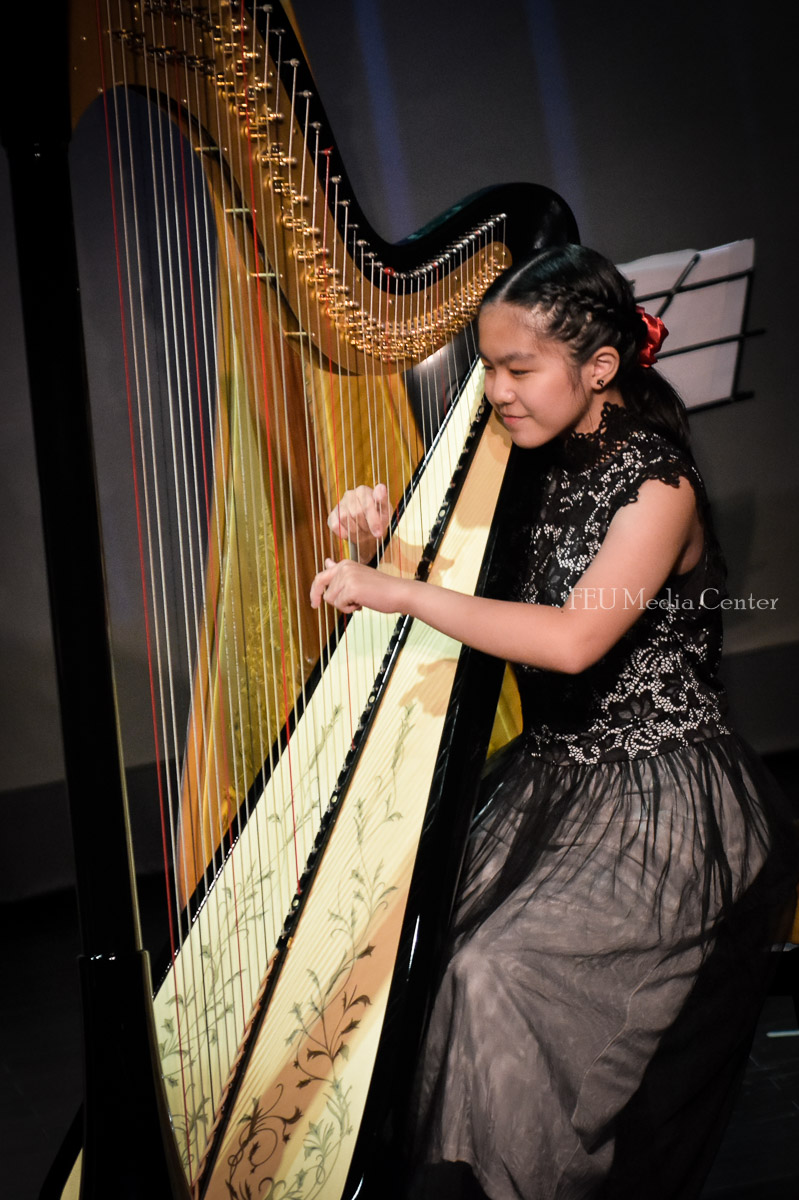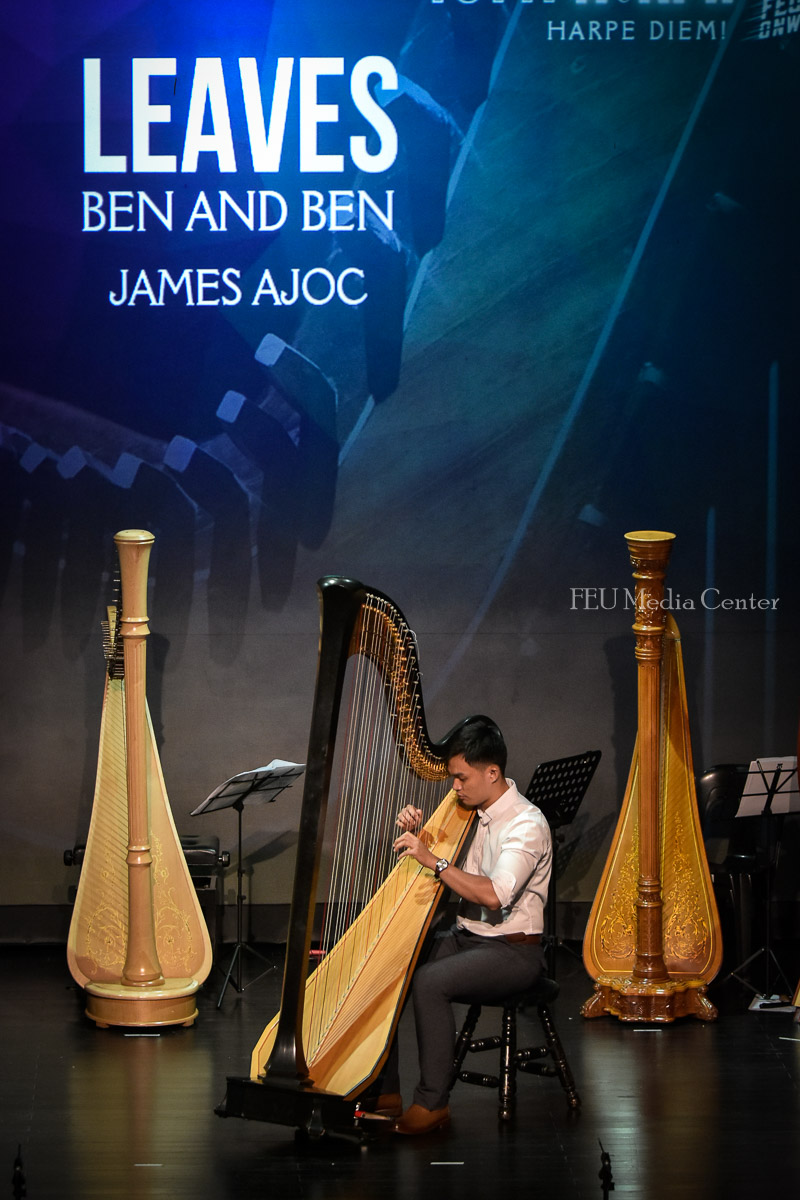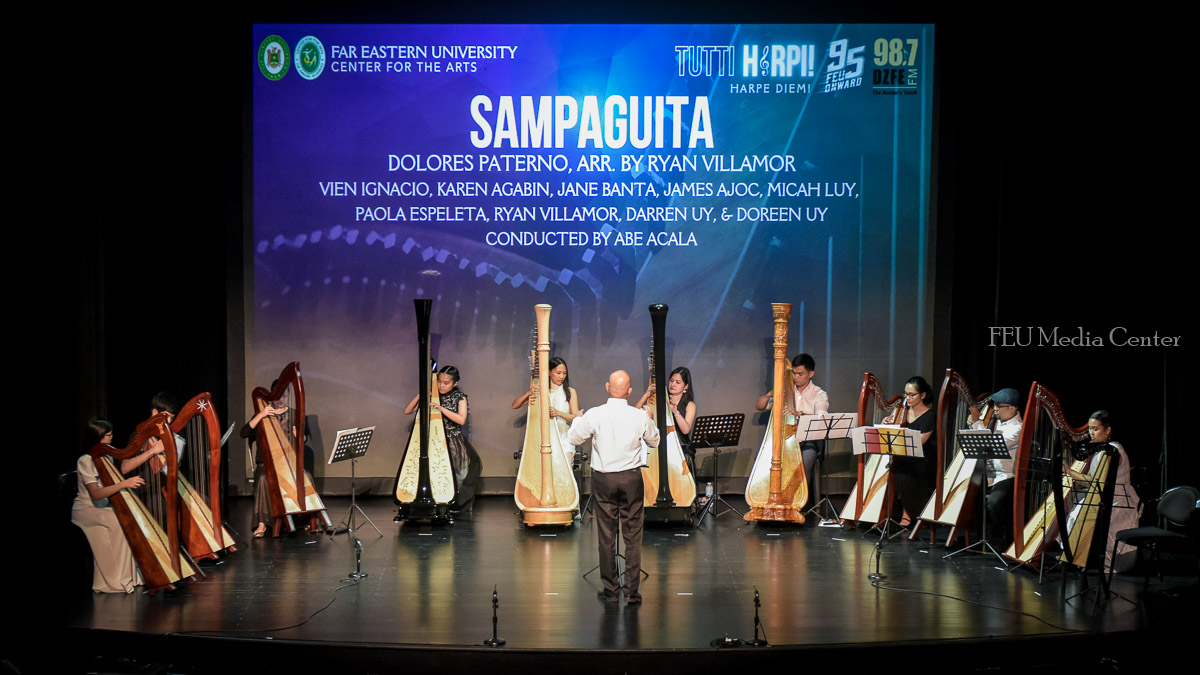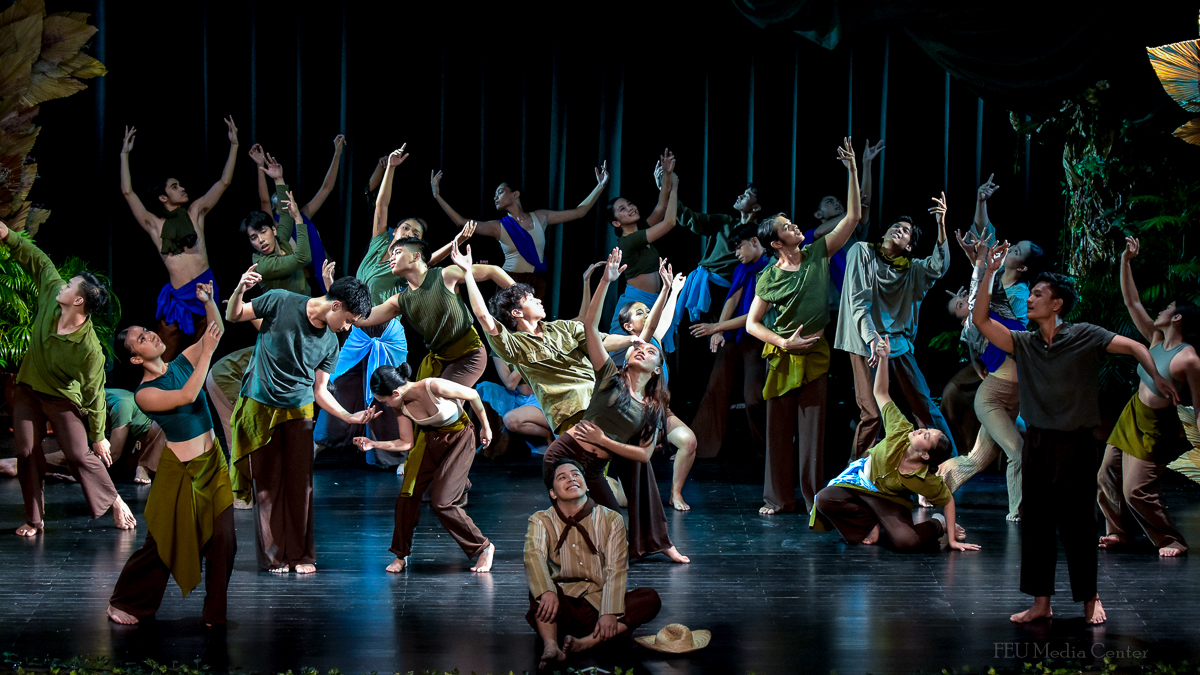(L-R) Doreen Uy, Darren Uy, Poala Espeleta-De Leon, Vien Ignacio, Karen Agabin, Conductor Abe Acala, Madeline Jane Banta, James Ajoc, Micah Luy, Ryan Villamor, Eliza Tabitha
In past cultural seasons, the Far Eastern University Center for the Arts, formerly FEU President’s Committee on Culture presented: Tutti Flutti; Tutti Guitarri; Tutti Voci; Tutti Celli.
After the concert in the FEU Auditorium last Oct.9, Tutti Harpi can now be added to the list.
When 11 year old harpist Vien Ignacio first saw the title, she asked: “Doesn’t harpi mean witch?”
Harps do not always have to be associated with angels especially with Halloween approaching; hence the harpists who performed in Tutti Harpi wore either black, white, or a combination of both colors.
Harps do not also have to be associated with heavenly or classical music. While arrangements of century-old pieces by Ludvig van Beethoven, Johannes Brahms, and George Handel were performed by the harpists playing either as soloists or as an ensemble, songs by Elvis Presley, Henry Mancini, and Edith Piaf were also included in the program.
Filipino pieces like “Sampaguita” by Dolores Paterno and “Recuerdos de Capiz” by Julio Nakpil may be over a hundred years old, but they were given new life by Ryan Villamor and Ignacio, the arrangers of those pieces for harp, who also performed them.
Of significance was that descendants of both Paterno and Nakpil were in the audience. One of the harps on stage was more than 80 years old and first owned by Adelaida Paterno, the sister of Dolores and the patriot Pedro.
More modern Filipino pieces like National Artist for Music Ryan Cayabyab’s “Paraiso,“ Ben & Ben’s “Leaves,” and Lola Amour’s “Raining in Manila” certainly delighted the many youngsters in the audience.
Solvie Nubla, who runs Pathways to Higher Education out of the Ateneo de Manila University wrote that her scholars who attended the concert “loved the harp—they didn’t realize…harps could play contemporary music.”
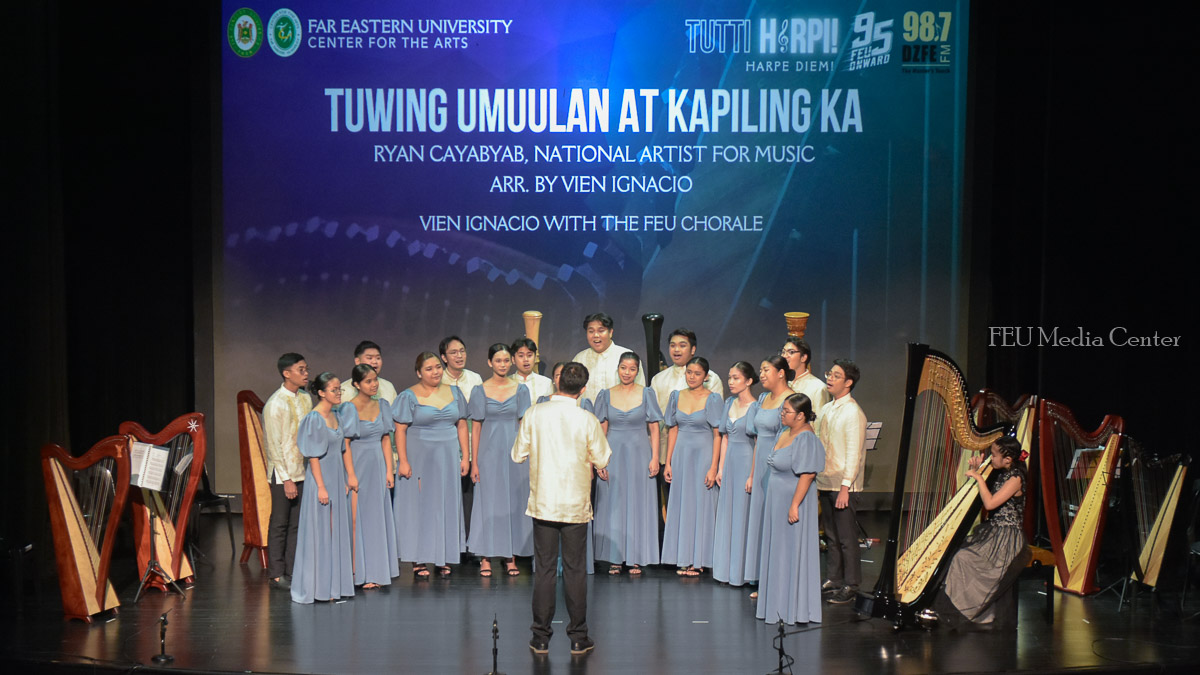
Adding depth to the concert, the FEU Dance Company and the FEU Chorale performed with the harpists for pieces like Cayabyab’s “Tuwing Umuulan at Kapiling Ka” and “Walking in the Air” by Howard Blake.
Annotations onstage by host and FEU Guide James Punzalan and additional program notes flashed on the screen helped the audiences to better appreciate the pieces they heard, the composers, and the harpists.
The harpists who were featured ranged in age, residence, background, and accomplishments. Some drove in or rented vehicles from provinces like Antipolo, Cavite, and Laguna. While three of the harpists trained abroad, many began learning the harp as a way to keep sane during the COVID-19 lockdown. One of them learned not just how to play but to make his own harps. In fact, six of the harps on stage for Tutti Harpi were made by him. Their passion for the harp brought them together for Tutti Harpi. For Tutti Harpi, they formed the Philippine Harp Ensemble.
Following the performance of all the harpists of the “Lupang Hinirang” by the Philippine Harp Ensemble, it was mentioned in the opening remarks that some National Artists in Music, Theater, and Dance premiered their works in the FEU Auditorium.
National Artist for Dance Leonor Orosa Goquinco began one of her concerts with the playing of the “Lupang Hinirang,” which was not yet the norm. Naturally, people stood. Subsequent performances in FEU and elsewhere then began with the national anthem.
It all started in the FEU Auditorium just like the Philippine Harp Ensemble, which made its debut during the Tutti Harpi concert and should now perform not just around the country but the world.
